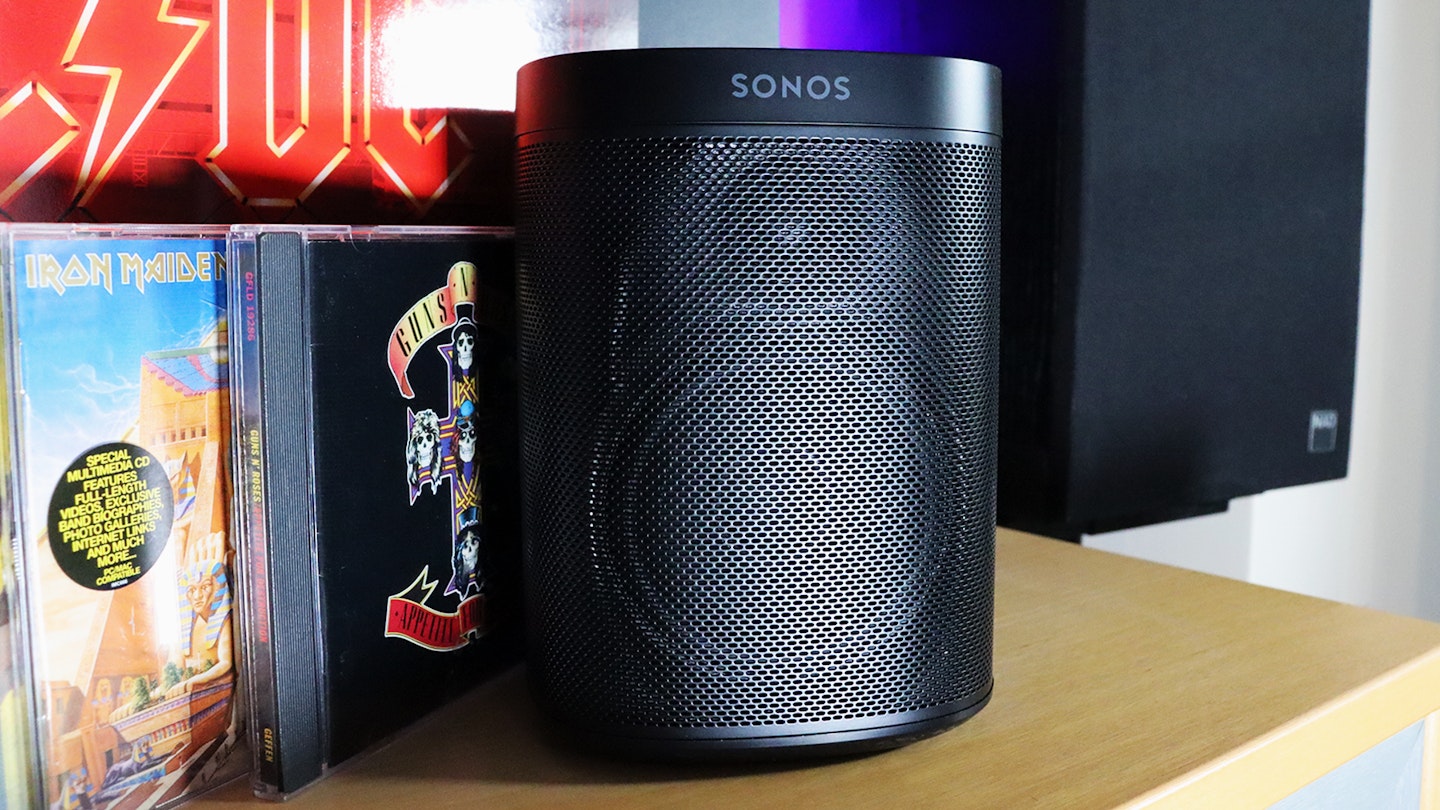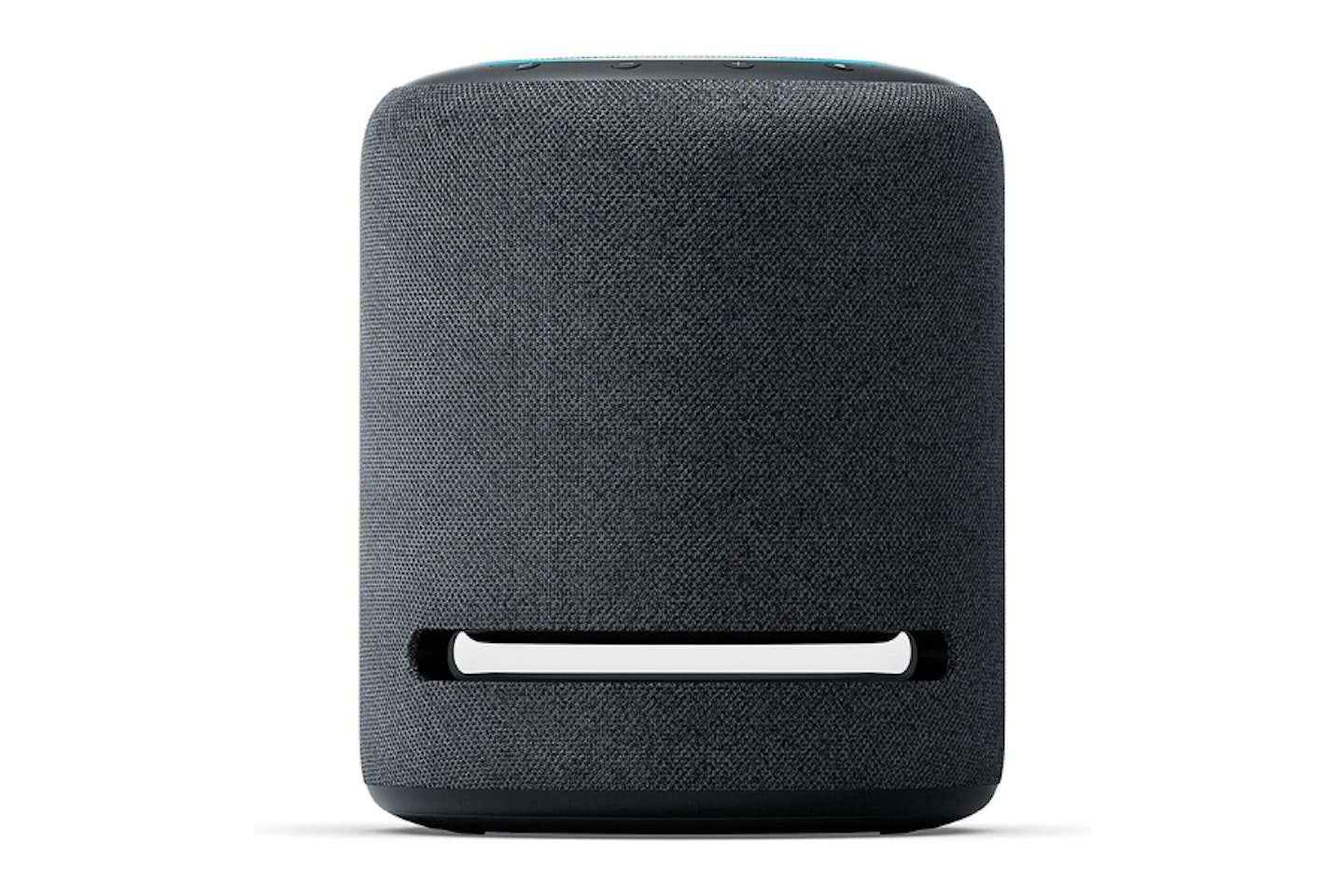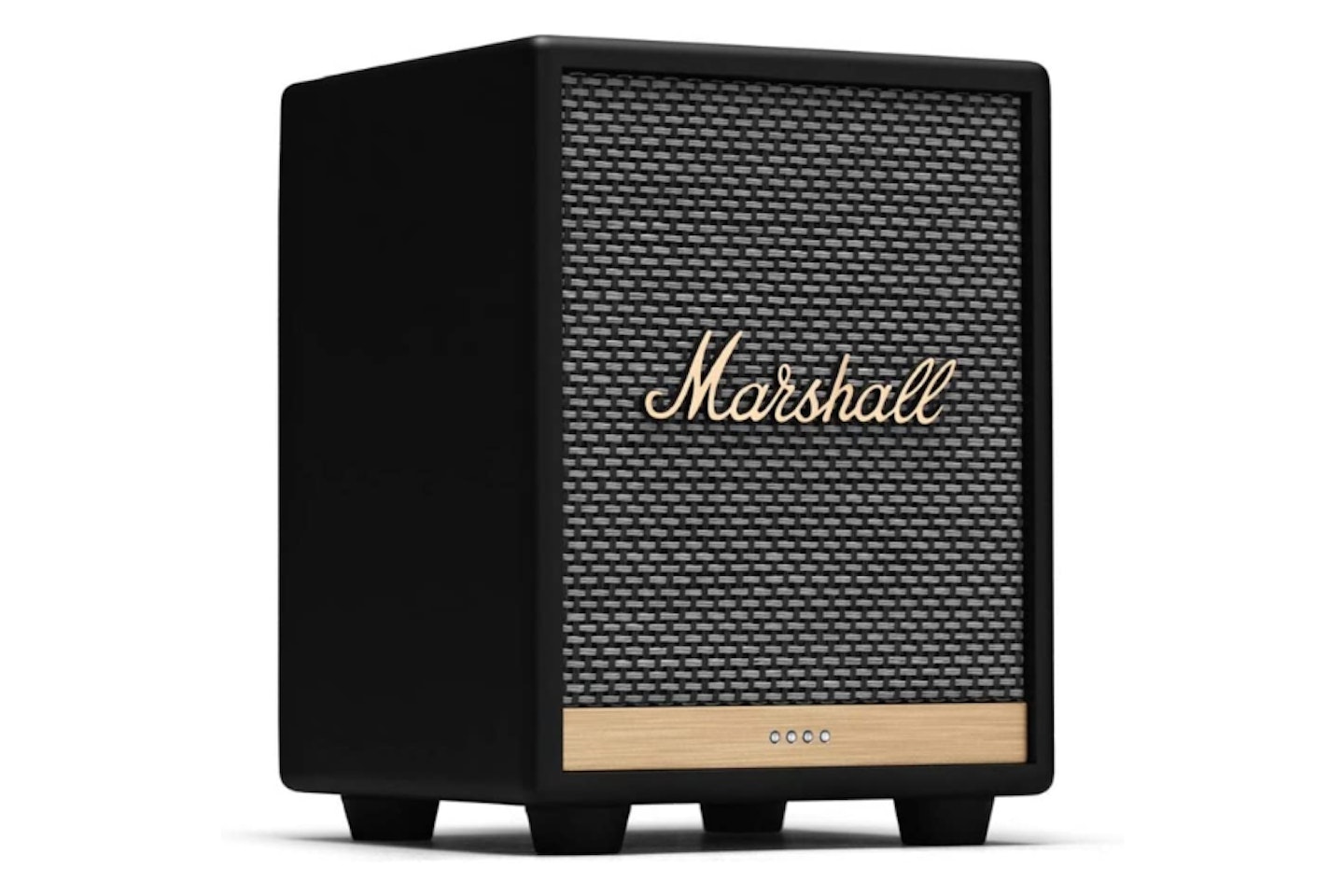As if Sonos doesn't already have enough speakers on the market, they've gone and introduced a second generation of its popular coffee-tin-shaped box of tricks - the Sonos One (Gen 2) smart speaker. With the sort of confidence that only comes from having some of the best speakers on the market, this one is touted as 'the smart speaker for music lovers' with 'room-filling' sound.
Naturally, it also has Alexa built-in, so it should slot right into your smart home setup. The Sonos One aims to deliver all of this from an inconspicuous box that will suit any decor. But is it even possible for a speaker to be this smart, this small, yet still sound great? As a real gadget geek and builder of random gizmos, our Tech Product Writer Chris Duffill has been putting one of these speakers to the test. So, did the Sonos One (Gen 2) smart speaker really have the smarts and the sounds to match? Read on for the surprising verdict.
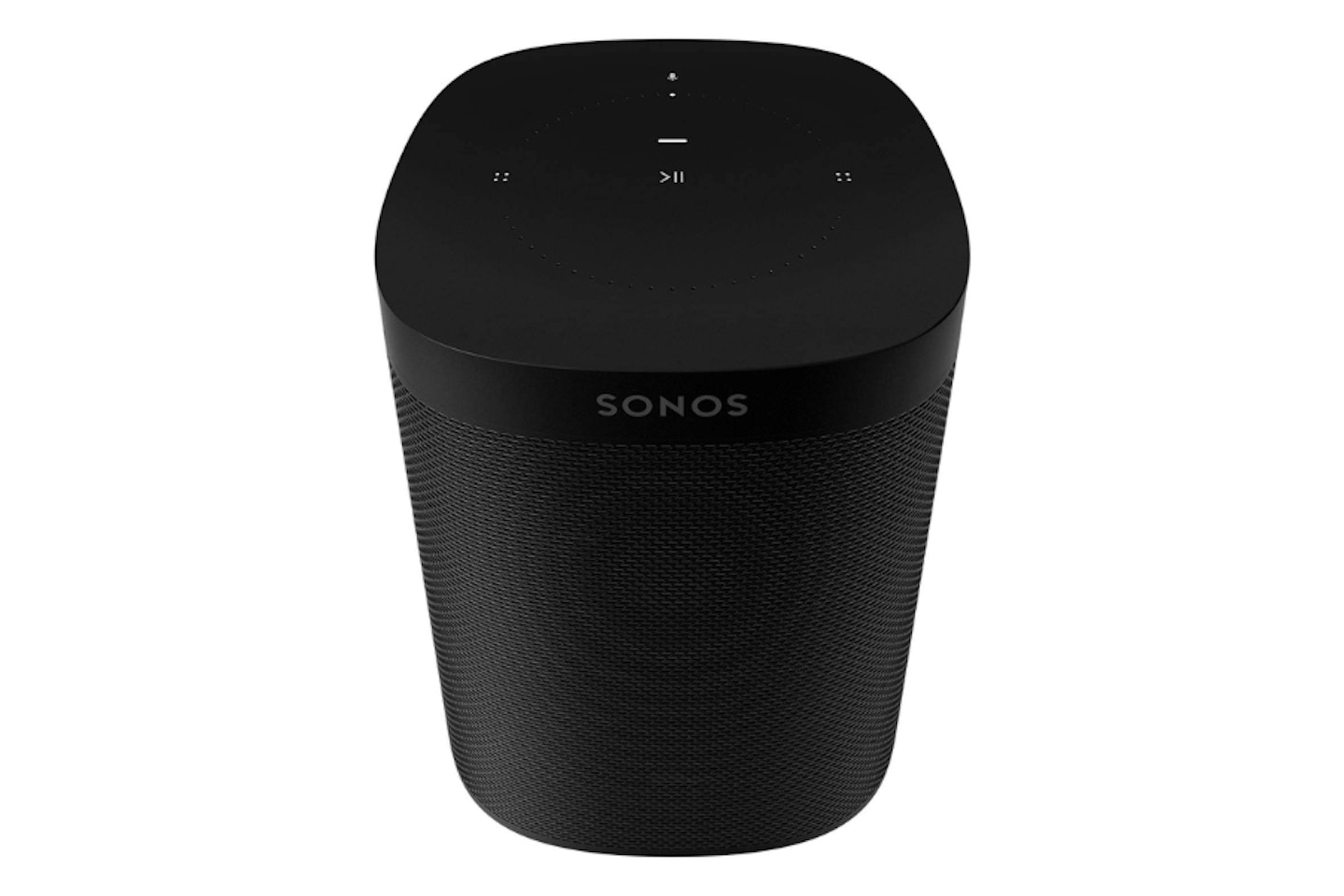
www.argos.co.uk
Pros
- Weighty premium build quality
- Amazing soundstage and separation for a small mono speaker
- Satisfying mid-woofer and very well-balanced frequencies overall
- Powerful enough for small to medium spaces
- Simple and well-guided setup
- Amazing bespoke room tuning thanks to Trueplay
- Reliable companion app
- Good Alexa functionality
Cons
- Bass can break up at the highest volumes, depending on the input level
- The Matte black version highlights dust very effectively
- Users report flaky Google Assistant functionality
| Speakers: | 1x Tweeter, 1x Midwoofer |
| Amplifier: | Two Class-D digital amplifiers (wattage not specified) |
| Connectivity: | WiFi 9802.11a/b/g/n 2.4 or 5Gz) |
| Memory and CPU: | 1GB SDRAM, 4GB NV, Quad Core 1.4Ghz A-53 CPU |
| Dimensions | 162 x 120 x 120 mm |
| Extra features: | Trueplay, Far-field microphone array, Touchpad Control, Alexa built-in, Google Assistant, Sonos companion app for EQ and more, Airplay 2, Direct stream from supported apps like Amazon Music, Pandora, Spotify and TIDAL. Two speakers can be connected together as a stereo pair. |
| Power: | 240V mains, via angled power cable |
| Weight: | 1.85 kg |
Performance

Setting up
If you have that momentary stab of setup anxiety when you unbox a new gadget, you'll be relieved to know how easy this speaker is to get up and running. The written instructions are minimal - and that's a good thing. I'm not a fan of having to read a bound edition of The Lord of The Rings to set up a new gadget. Sonos really had my back here, because one of the first things it tells you to do is get the Sonos App.
For once we actually have a simple, usable and extremely intuitive companion app. With playback buttons on the top, Sonos has placed the pairing button at the back, out of sight with an ethernet port. On my matte black model, this button was tricky to see for a Sonos newbie. The app has animations to orientate you, showing you where each button is as you go.
Once connected to my home network, the Sonos One immediately downloaded an update and I was all set. Having two Echo Dots in my room already, I wanted to add the Sonos to my Alexa setup. That was easy, and I was soon using the usual voice assistant functionality to play music through the Sonos One. Next, I used the app to tweak the EQ; Although, it was almost perfect right out of the box. Playing tracks from Spotify Connect was simple, and I listened to some of my favourite internet radio stations too.
The sound
Prompted by the app, I opened Trueplay. This involved using my mobile device and waving it around while a test tone played. Despite looking like I was re-enacting the 'we're not worthy' scene from Wayne's World, the results were amazing. Having adjusted to suit the acoustics of my study, the treble now really projects with an almost virtual surround effect. The most pleasing aspect of this speaker is the balanced and reasonably wide soundstage. Even after adjusting the EQ with the app, the music never sounded terrible, and the bass never collapsed. I was basically unable to break the sound, only alter it.
Even better, when playing Metallica's bass-grinding track Seek And Destroy, the low end remained heavy yet balanced and contained. Some blues tracks from an internet radio station actually sounded less compressed than via iPad earbuds. Back to Spotify, I threw some Credence Clearwater Revival at the Sonos. Down On The Corner was uplifting and equally well-rounded. As this is an Airplay 2 speaker, I was also able to pipe my iPhone through to the Sonos One.
John Williams' The Imperial March on Amazon Music really put the speaker to the test. As any Star Wars or orchestral music fan knows, this track has some beautiful and delicate high notes with a crescendo of mids and bass as the Empire prepares to strike back. The Sonos One (Gen 2) smart speaker stayed on target the whole time.
So, the small elephant in the medium-sized room is that this is a mono speaker. Stereo sound downmixes to one mono channel - unsurprising, given this is a single small speaker. I have to say that I am seriously tempted to buy a second Sonos One and turn both into a stereo pair. Some great forethought by Sonos there. Mono or not, this little smart speaker really does project itself into all the corners of my room. I was able to push things too far though; even the best small speaker will probably show some rough edges at 10/10 volume. Used as a highly-capable small speaker, the Sonos One outperformed my expectations. The soundstage is broad enough and frequencies well-defined enough to make me forget that this is a mono speaker.
Build

The first thing I noticed as I gingerly lifted the Sonos One from the box is the weight. This may have an understated design and somewhat diminutive stature, but a cheaply-built smart speaker this is not. Those two Class-D amps and the mid-woofer are heavy, and the wrap-around grille is metal. The whole thing has a premium feel.
Thankfully, I found the touch controls on the top to be responsive without being too sensitive. That said, as this is an Alexa device, I rarely found myself using them. In terms of the overall design, I really appreciate the approach that Sonos has taken with the Sonos One. The company clearly realises that reliable voice control and excellent sound quality are what users care about here. You don't have to look at it to use it, but this unassuming box with its rounded corners and refined finish is satisfying. If anything, the Sonos One (Gen 2) smart speaker stealthily blends into the background of any room - aided by a matte black finish that Bruce Wayne himself would approve of.
Any downsides?
If your Spotify playlist suddenly kicks out an absolute belter you might ask Alexa for max volume. I did, and that was a bit of a mistake. Depending on what you're listening to, the level will vary. I found that most music would start to break up at volumes 8 to 10 (10 being the maximum). This just proves that you can push the Sonos One a little too far for comfort, as with many small speakers. I keep it loud - but sensibly loud. Very large rooms, however, will probably warrant a larger speaker.
Although the Sonos One will happily register itself as another Alexa speaker, it won't let me set an alternative wake word. I have my Echo wake word set as 'Computer'. So, if I want to keep pretending I live in the 24th century I will have to aim my inner Trek nerd at my Echos. They're in the same room, so no problem. Also, I can't send music to both the Sonos One and the Echo Dots as a single combined output. But that's fine; I wouldn't want to muddy the Sonos One's sound for the sake of a mismatched surround effect. There's also no Bluetooth speaker functionality here, so you're firmly stuck with wifi.
One last nitpick. The Sonos One's matte black finish is a brilliant indicator of when it's time to get the duster out. But they have at least thought about how you clean a device that's on all the time. You can deactivate the touch controls with the app. Then you can safely run a duster over it without turning your 80s hair metal all the way up to 11.
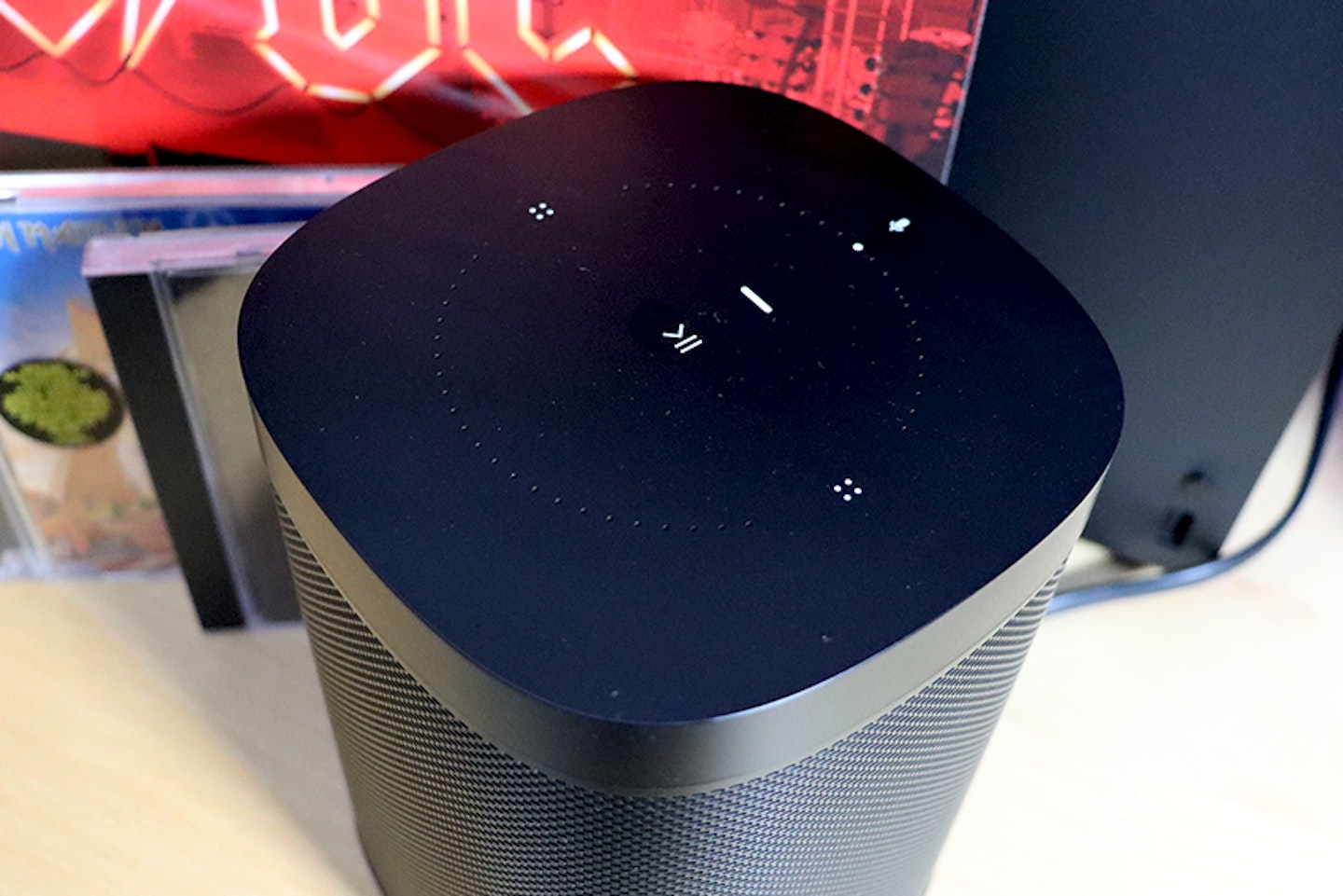
Price and competition
I think there's very little out there that could compete in terms of the overall experience that the Sonos One (Gen 2) smart speaker provided. But, in terms of sound, I would probably single out similar options from Marshall.
As far as smart speakers go, there are probably better for those in the Google Assistant ecosystem - and that's purely based on user testimony. As an Alexa user, I found the Sonos One to work reliably.
Some might consider a speaker the size of a milk carton to be overpriced at almost £200, but I think it's worth every penny. In my experience, when you get close to £100 for a speaker that plugs into the wall the quality starts to slide. The Sonos One may look portable (and Sonos does offer a similarly-sized portable - the Sonos Roam) but it has far too much weight, amplification and home automation functionality to be challenged by sub £150 portables.
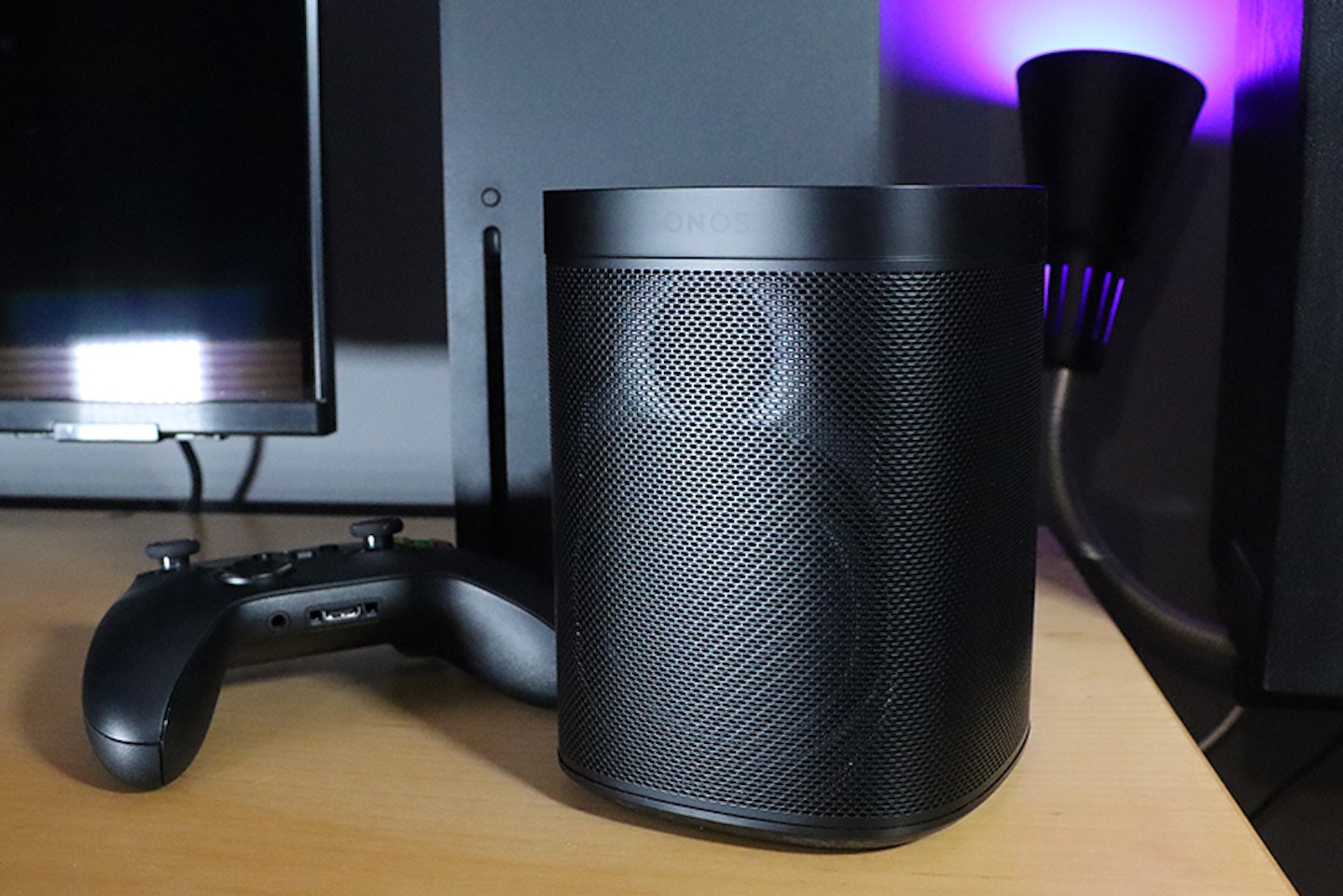
Verdict
At times this speaker would further exceed the high expectations I'd already built during listening. Occasionally the resonance of the bass and the clarity of the treble would actually make me check whether the speaker was right in front of me, and not behind me at the back of the room. I have to put that down to the Trueplay tuning.
I've had this Sonos One playing for hours every day for weeks now. The only time I've been reminded that this is a small mono speaker is when I pushed the volume too far. I have a large amplifier and NAD speakers for those really ear-splitting sessions - but it's a testament to the Sonos One that I could forget it wasn't at least twice its size. As an extension to my existing Alexa devices, it's become my go-to speaker for casual listening. It's brilliant, even if I do find myself dusting it whenever Queen's I Want To Break Free comes on...

www.argos.co.uk
Pros
- Weighty premium build quality
- Amazing soundstage and separation for a small mono speaker
- Satisfying mid-woofer and very well-balanced frequencies overall
- Powerful enough for small to medium spaces
- Simple and well-guided setup
- Amazing bespoke room tuning thanks to Trueplay
- Reliable companion app
- Good Alexa functionality
Cons
- Bass can break up at the highest volumes, depending on the input level
- The Matte black version highlights dust very effectively
- Users report flaky Google Assistant functionality
| Speakers: | 1x Tweeter, 1x Midwoofer |
| Amplifier: | Two Class-D digital amplifiers (wattage not specified) |
| Connectivity: | WiFi 9802.11a/b/g/n 2.4 or 5Gz) |
| Memory and CPU: | 1GB SDRAM, 4GB NV, Quad Core 1.4Ghz A-53 CPU |
| Dimensions | 162 x 120 x 120 mm |
| Extra features: | Trueplay, Far-field microphone array, Touchpad Control, Alexa built-in, Google Assistant, Sonos companion app for EQ and more, Airplay 2, Direct stream from supported apps like Amazon Music, Pandora, Spotify and TIDAL. Two speakers can be connected together as a stereo pair. |
| Power: | 240V mains, via angled power cable |
| Weight: | 1.85 kg |
More items to consider
The Echo Studio is probably the closest to the Sonos One in terms of size, function and budget. The addition of Dolby Atmos and 3-D sound is a must for anyone who prefers movies over music. Home automation, web searches, reminders - you name it; Alexa is just a shout away. The bass is respectable for such a small speaker, but for bass addicts out there, the addition of an Echo Sub will give you that satisfying boost.
Pros
- Neat and inconspicuous
- Great modern design
- Very easy to set up
- Massive well-rounded three-dimensional sound
Cons
- If you want more bass you'll need to get an Echo Sub
| Speakers: | Three 51 mm midrange speakers, 25 mm tweeter, 1 x 33 mm woofer with bass aperture |
| Connections: | Wi-fi, Bluetooth |
| Power: | Peak output 330 W |
| Weight: | 3.5kg |
| Dimensions: | 206 x 175 mm |
| Extra features: | Dolby Atmos |
Pros
- Fantastic sound performer
- Iconic Marshall design and solid build
- Far-field voice microphone array
- Has Bluetooth as well as WiFi
- Top touch controls for EQ
Cons
- Marshall App is not the best
| Speakers | Dynamic driver. 1x woofer, 1x tweeter |
| Amplifier: | 30 Watt Class D amplifier for the woofer and tweeter |
| Weight | 1.8 kg |
| Dimensions | 10.9 x 23 x 9.5 cm |
| Connections: | Bluetooth, WiFi, Airplay 2, Spotify Connect |
| Extra features: | Alexa voice control, multi-room support, far-field microphone array |
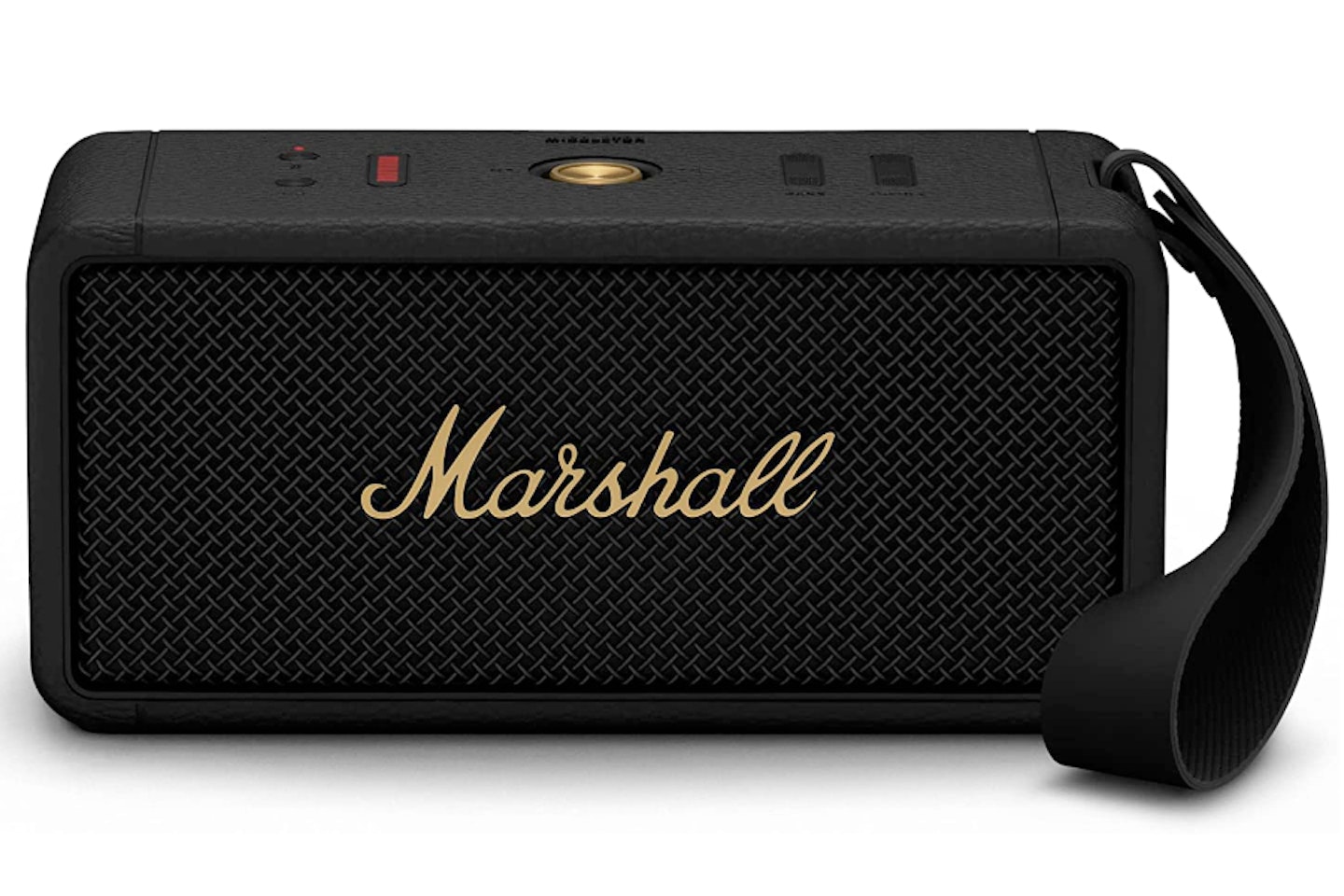 Marshall
MarshallA little bit of a wildcard option here, given that this is not a smart speaker. We reviewed the Marshall Middleton recently and found that it can deliver resonant bass and excellent soundstage from its four brilliantly-engineered speakers. The EQ is easily controlled too. Although this is a portable rechargeable speaker, it will sit very well on the shelf as a small and powerful music speaker at home.
Pros
- Brilliant EQ controls
- Suits a range of music genres
- Solid connections
Cons
- Fairly bulky
| Dimensions | 10.9 x 23 x 9.5 cm |
| Weight | 1.8 kg |
| Power | 30 w, 20 w |
| Battery life | 20+ hours |
| Charging time | 4.5 hours |
| Waterproofing | IP67 |
| Connections | Bluetooth 5.1, Aux-in, USB-C |
- Our review: "I’ve been using the Middleton to listen to nearly everything, from chilled soul classics to brutal-breakdown hardcore and hyped-up house. It handles all with ease - the EQ controls on the top help you balance bass and treble to suit the music. The quality of the audio and volume has meant it’s perfect for filling my office or living room. Even in the garden, where bass tends to lose its oomph, the Middleton delivered." Tried and tested by William Lobley, Deputy Tech & Fitness Editor
Who tested it?
Chris Duffill is our Tech Product Writer. When not listening to blues, rock and metal on vinyl, he’s probably making some sort of electronic gizmo from parts. With experience in video and digital media production, he's a detail-obsessed fan of entertainment, hardware, software and the latest tech.
How this product was tested
I tested the Sonos One (Gen 2) smart speaker every day for a month (and counting). The speaker was exclusively used in a study measuring around 16' x 10'. Music was accessed via streaming services, including Amazon Music, Spotify Premium, and various internet radio stations. AirPlay 2 was used to connect with Apple devices for locally-stored music and spoken-word podcasts.
Chris Duffill is a Tech Product Writer for What's The Best and Yours. His background includes writing, editorial, marketing, design, video production and photography.
He specialises in home entertainment and audiovisual tech, including speakers, amplifiers, turntables, streaming media players, and TVs. He is also one of our resident experts in computing (PCs, tablets, smartphones, smartwatches) and DSLR photography and all kinds of digital cameras. He also writes about retro gaming, game consoles and various electronic gadgets. If it plugs in, lights up or makes a noise, he’ll write about it.
Subscribe to the What’s The Best Newsletter to keep up to date with more of the latest reviews and recommendations from the rest of the What’s The Best team.
